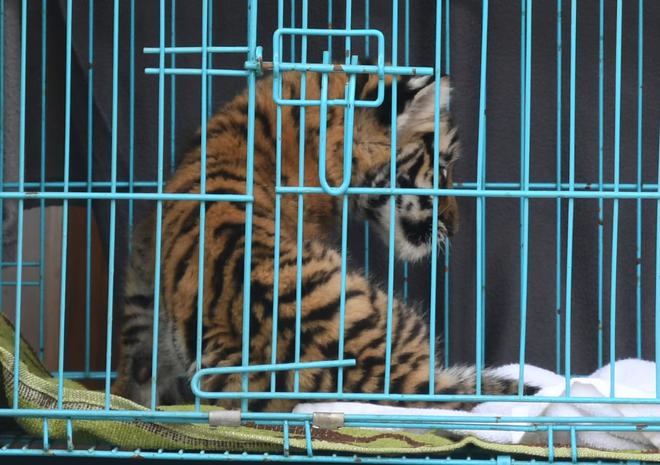Four more tiger cubs died in the Nilgiris since Sunday, bringing the death toll of tigers recorded in the district to ten animals in just over a month. Forest department officials said that while one cub was found dead on Sunday evening, a search of the area resulted in the findings of three more cubs on Tuesday morning – two which had died, and one in a severely weakened state.
The cub that was still alive was from the heavily forested area in Chinna Coonoor in Kadanad, and was being treated from Tuesday morning, but died after failing to respond to treatment later in the evening.
According to officials, one cub was found dead in Kadanad, in the interface between the Nilgiris forest division and the buffer zone of the Mudumalai Tiger Reserve (MTR) on late Sunday evening and a postmortem was conducted on Monday. Field Director of MTR and Conservator of Forests (Nilgiris), D. Venkatesh, said that there were signs that the cub had not been feeding, which had led to its death.
“We immediately formed teams to perambulate the area and search for the mother and three other cubs that had been spotted in the area on September 14th,” said Mr. Venkatesh. After a thorough search of the area, forest staff came upon the carcasses of two other tiger cubs, while one was still alive,” said Mr. Venkatesh.
He said that staff had also discovered the carcass of a sambar deer in the area which they suspect has been hunted and killed by the adult tiger and mother of the four cubs. “We have fixed camera traps around the carcass to see if the animal returns, so we can ensure that it is safe and in good health,” added Mr. Venkatesh.
Two teams of forest staff, including personnel from Gudalur have been deployed around the area to find the adult tigress. They suspect that the mother of the four cubs is an adult tigress named MDT234, which has been spotted in Segur and Kadanad over the last few years, and has also been photographed recently.

With the death of the four cubs, the total number of tigers that have died in the Nilgiris now stands at ten animals in just over a month. The fatalities now include six tiger cubs, and four adult animals, with conservationists raising concerns that not enough is being done to understand the reasons for the increase in number of tiger deaths in the district. One conservationist, who requested anonymity, said that while tigers are known to abandon their cubs, that such instances were quite rare. “Especially as the cubs seem to have been in good health, it is strange that the tigress would choose to abandon them as claimed by the forest department. Officials and staff should ensure that even if that were the case, that the mothers are tracked to ensure that they have not died or have been killed, as at least one of the nine dead tigers in the Nilgiris have confirmed to have been poisoned,” said the conservationist.
Field Director of MTR and Conservator of Forests (Nilgiris), D. Venkatesh, told The Hindu that the forest department was working throughout the clock trying to ascertain the fate of the tigress. “In the case of the deaths of two cubs in the Segur, the area was arid and flat, and we could see signs of the tigress in the form of pug marks. However, as this area is heavily forested, we are unable to see any signs of the mother, but we have discovered tiger scat and have collected it for analysis,” said Mr. Venkatesh, adding that the nature of the terrain, combined with the need to ensure the safety of field staff was limiting the capacity of the department in locating the animal.







